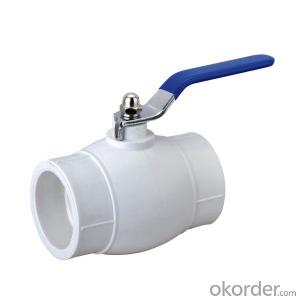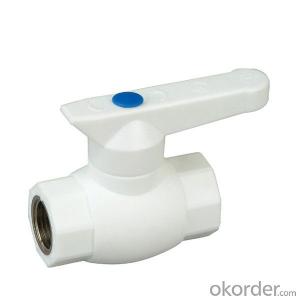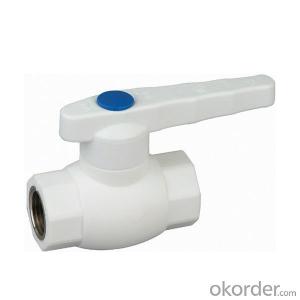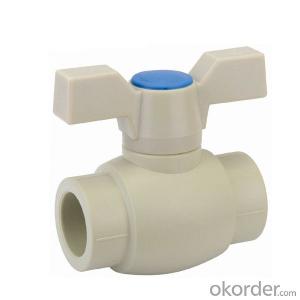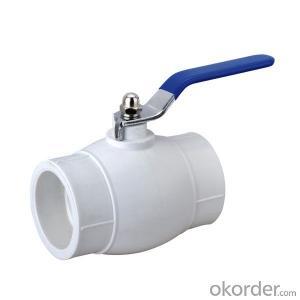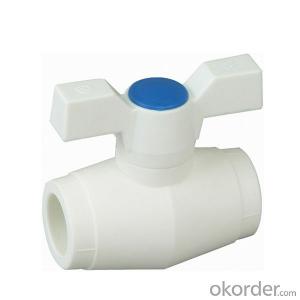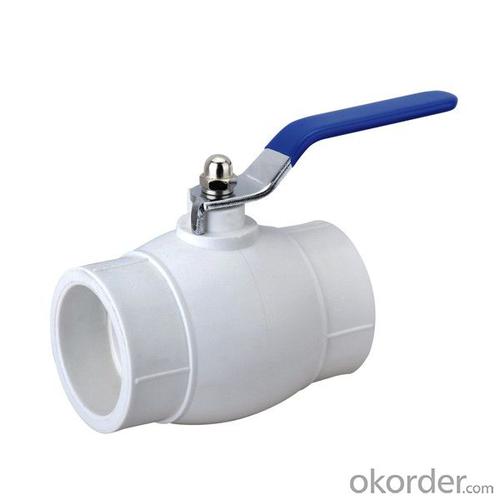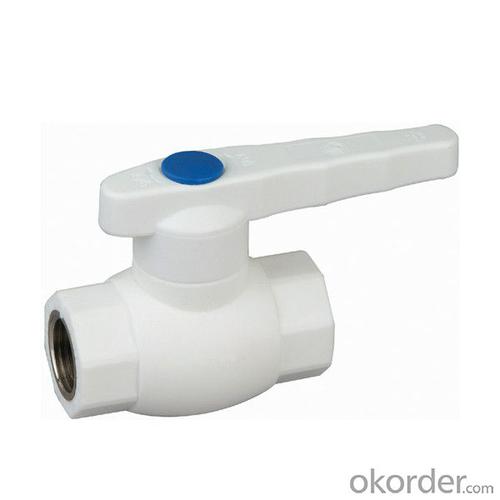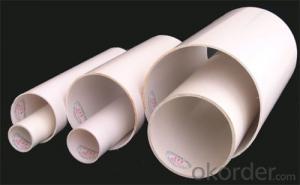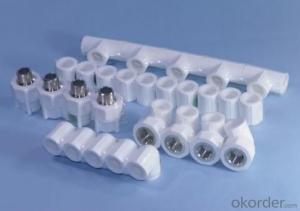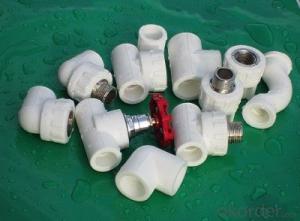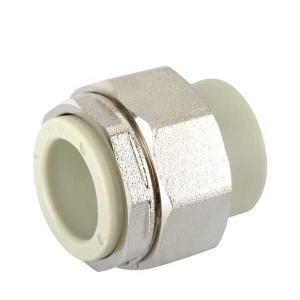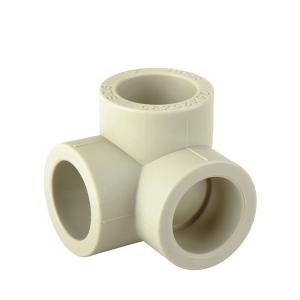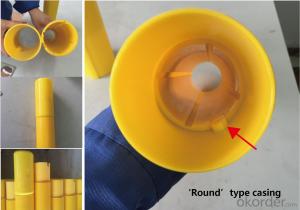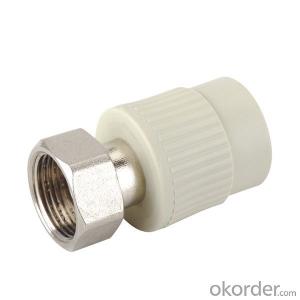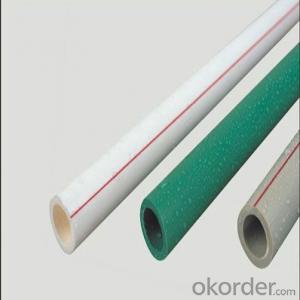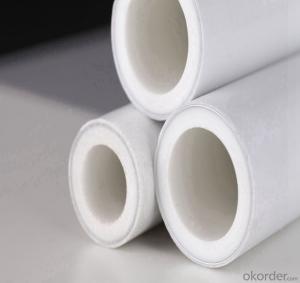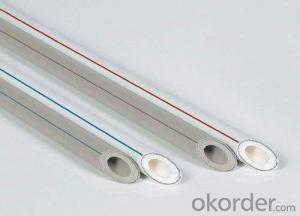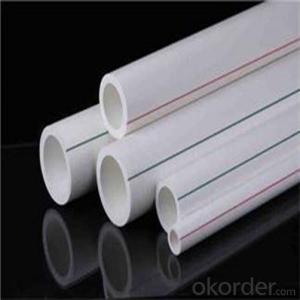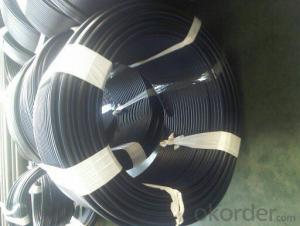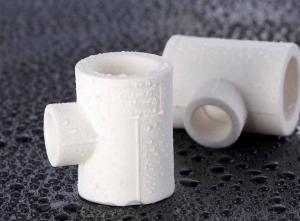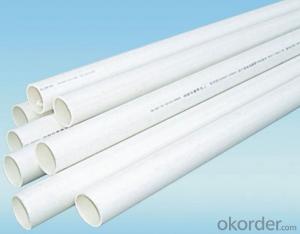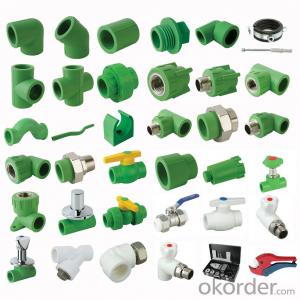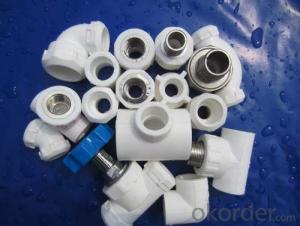Plastic Drain Pipes and Fittings - Ball Value of PPR Pipes for Hot and Cold Water Conveyance with Safety Guaranty
- Loading Port:
- Shanghai
- Payment Terms:
- TT OR LC
- Min Order Qty:
- 1000 pc
- Supply Capability:
- 50000 pc/month
OKorder Service Pledge
OKorder Financial Service
You Might Also Like
Packaging Details:
1. Large carton:515x400x220 Cubage:0.04532 M3
Small carton:390x255x250 Cubage:0.0248 M3
2. PE poly bag+ cartonDelivery Detail: 15 days/ 20" container; 25 days/ 40HQ
Our Advantages:
1) Healthy, bacteriological neutral, conforming to drinking water standards
2) Resistant to high temperatures, good impact strength
3) Convenient and reliable installation, low construction expenses
4) Excellent heat-insulation property from minimum thermal conductivity
5) Lightweight, convenient to transport and handle, good for labor-saving
6) Smooth inner walls reduce pressure loss and increase flow speed
7) Sound insulation (reduced by 40% compared to galvanized steel pipes)
8) Light colors and excellent design ensure suitability for both exposed and hidden installation
9) Recyclable, environment-friendly, accords with GBM standards
Applications
> Distribution for cool and hot water;
> Duct for drinkable water system;
> Pipes for kinds of high-temperature and low-temperature heating system;
> Pipes for heating and coolling settings in solar energy system;
> Connecting pipe for air conditioners.
Specification
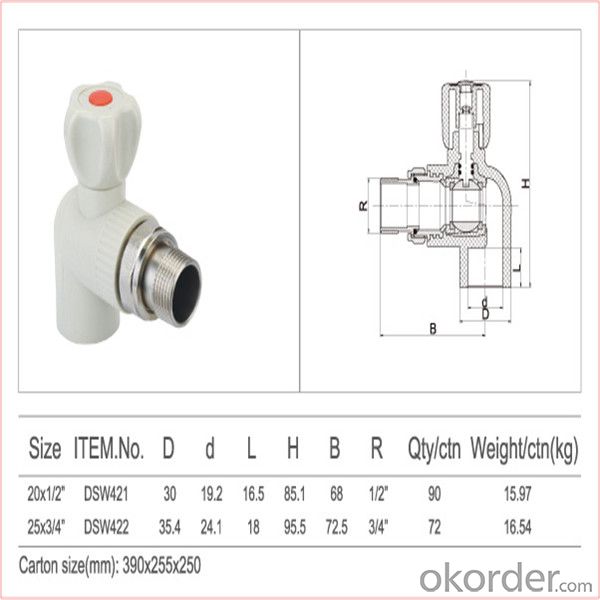
FAQ
1. How can I get a quotation from you ?
You can leave us message, and we will reply every message in time. Or we may talk on line by Trademanager.
And you can also find our contact information on contact page.
2.Can I get samples before order ?
Yes, of course. Usually our samples are free.
3. what is your delivery time ?
The time of delivery is usually around 1 month(1*40FT as usual).
We can send out in 2 days, if it has stock.
4.What is your payment terms?
Our normal payment terms now is: T/T, L/C or western union,paypal
Please feel free to leave us message if you have any question about us and our products.
- Q: How do plastic pipe fittings compare to copper fittings?
- Plastic pipe fittings and copper fittings have different advantages and disadvantages. Plastic fittings are typically cheaper and easier to install, as they do not require soldering. They are also resistant to corrosion and can handle high water pressure. However, copper fittings have better heat resistance and are more durable, making them suitable for hot water applications. Additionally, copper fittings have a longer lifespan and are generally considered more reliable. Ultimately, the choice between plastic and copper fittings depends on the specific needs and requirements of the plumbing system.
- Q: Can plastic pipe fittings be used for high-pressure applications?
- No, plastic pipe fittings are generally not recommended for high-pressure applications.
- Q: Are plastic pipe fittings suitable for hot water systems?
- Yes, plastic pipe fittings are suitable for hot water systems. They are commonly used in residential and commercial applications due to their durability, corrosion resistance, and ease of installation. However, it is important to use fittings specifically designed for hot water systems and ensure they are installed correctly to prevent any potential issues.
- Q: What are the common testing methods for plastic pipe fittings?
- The common testing methods for plastic pipe fittings include pressure testing, visual inspection, dimensional measurement, and mechanical testing. Pressure testing involves subjecting the fittings to various pressures to ensure they can withstand the intended operating conditions without leakage. Visual inspection is done to check for any visual defects or irregularities in the fittings. Dimensional measurement is performed to verify that the fittings meet the required specifications and can be properly installed. Mechanical testing involves subjecting the fittings to various loads or forces to assess their strength, durability, and resistance to deformation.
- Q: Are plastic pipe fittings recyclable?
- Yes, plastic pipe fittings are generally recyclable. However, it is important to check with local recycling facilities or waste management authorities to ensure they accept these items for recycling.
- Q: Can plastic pipe fittings be used in pressure washing systems?
- Yes, plastic pipe fittings can be used in pressure washing systems. However, it is important to ensure that the plastic fittings are designed to withstand the pressure and temperature requirements of the specific pressure washing system being used. Additionally, it is recommended to regularly inspect and maintain the plastic fittings to prevent any potential leaks or failures.
- Q: How do you connect plastic pipe fittings together?
- To connect plastic pipe fittings together, you typically use solvent cement. This adhesive is applied to the outside of the pipe and the inside of the fitting, and then the two pieces are pressed firmly together. The solvent cement creates a strong bond that securely holds the fittings in place.
- Q: Who knows the size of the PVC pipe and what is the maximum and minimum size?
- Because of its harm to human body, Europe, Japan and South Korea and other countries have restrictions on using PVC as raw material and products. PVC resin has the advantages of plastic products is generally difficult to burn, abrasion resistance, chemical resistance, low leakage, good gas vapor. In addition, comprehensive mechanical energy, products transparent, electrical insulation, insulation, noise elimination, shock elimination, or better, is the most superior price than the general type of material. The defect is thermal stability and shock resistance is poor, whether it is hard or soft, PVC is easy to produce brittle during use. General PVC is not containing the relevant national standards allow the use of two (2 - ethylhexyl) adipate plasticizer (DEHA), DEHA in the high temperature (over 100 degrees Celsius) easily released, after contact with human health hazard. Because PVC is a hard plastic, to make it soft, a large amount of plasticizers must be added. Plasticizers are easy to release in a heated environment. If you are using DEHA, it will interfere with the human endocrine, cause women to breast cancer, birth defects, reduce the number of male sperm, or even mental disorders.
- Q: Are plastic pipe fittings resistant to mold and mildew?
- Yes, plastic pipe fittings are generally resistant to mold and mildew as they do not provide a suitable environment for their growth.
- Q: Can plastic pipe fittings be used for compressed gas systems?
- No, plastic pipe fittings should not be used for compressed gas systems as they may not be able to withstand the high pressure and can pose a safety risk. Metal fittings specifically designed for compressed gas applications should be used instead.
Send your message to us
Plastic Drain Pipes and Fittings - Ball Value of PPR Pipes for Hot and Cold Water Conveyance with Safety Guaranty
- Loading Port:
- Shanghai
- Payment Terms:
- TT OR LC
- Min Order Qty:
- 1000 pc
- Supply Capability:
- 50000 pc/month
OKorder Service Pledge
OKorder Financial Service
Similar products
Hot products
Hot Searches
Related keywords
